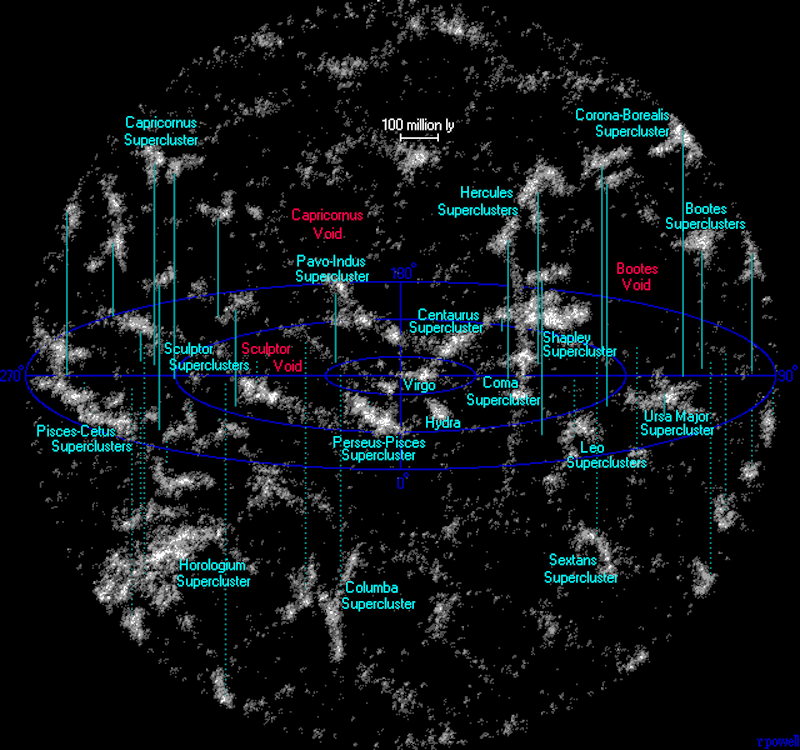If you could zoom out from Earth far enough, our Milky Way would shrink to just one galaxy among roughly fifty neighbours clustered together by gravity. These galactic neighbourhoods vary dramatically in size, and the largest ones, containing hundreds or thousands of galaxies bound together, represent some of the most massive objects in the entire universe. Their immense scale makes them uniquely valuable laboratories for testing our understanding of fundamental physics.
 Galactic superclusters, like those in the image that are the closest clusters to our own, represent some of the largest structures in the universe (Credit : Richard Powell)
Galactic superclusters, like those in the image that are the closest clusters to our own, represent some of the largest structures in the universe (Credit : Richard Powell)
A team led by University of Chicago scientists has now catalogued these colossal structures using data from the Dark Energy Survey, which spent six years photographing the southern sky from a mountaintop observatory in Chile. By analysing the number and distribution of galaxy clusters across vast regions of the space, the researchers aimed to probe the invisible forces that shape the universe, particularly dark matter, which pulls galaxies together, and dark energy, which drives them apart.
The study addresses a nagging tension in cosmology centred on a number called S8, which quantifies how clumpy or structured the universe is. Previous research using a technique called weak gravitational lensing had suggested the universe might have slightly less structure today than our best theoretical model, Lambda-CDM, predicts based on observations of the early universe. If this discrepancy were real, it would indicate problems in our fundamental understanding, potentially requiring physicists to revise our current model.
However, the new galaxy cluster analysis tells a different story. The measurements align well with Lambda-CDM predictions, suggesting our current model remains a good description of observable reality. This conclusion matters because it comes from an independent method. When different approaches converge on the same answer, scientists gain confidence they're on the right track.
Galaxy clusters serve as particularly sensitive measuring sticks because their enormous masses amplify the subtle effects of dark matter and dark energy. Yet this sensitivity creates challenges, clusters hiding behind one another from our viewpoint can skew calculations, potentially leading researchers to incorrect conclusions about how much dark matter exists in the universe. The team believes they've successfully accounted for these and other complications that plagued earlier studies.
 Artist impression of the Nancy Grace Roman Telescope will help to unravel the nature of the universe (Credit : NASA)
Artist impression of the Nancy Grace Roman Telescope will help to unravel the nature of the universe (Credit : NASA)
The research involved 66 scientists from more than 50 institutions worldwide, demonstrating the collaborative nature of modern cosmology. Looking ahead, the next generation of massive telescopes, including the Rubin Observatory and the Nancy Grace Roman Space Telescope, will dramatically expand the number of galaxy clusters astronomers can map. Each additional cluster provides more information about the fundamental forces governing the evolution of our universe.
Source : Scientists release new survey of the biggest objects in the universe

